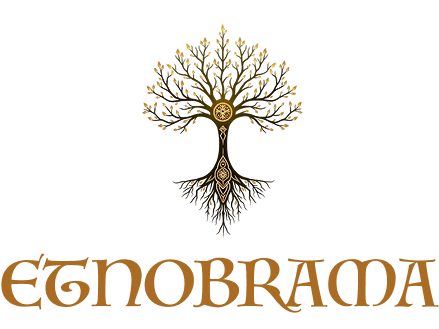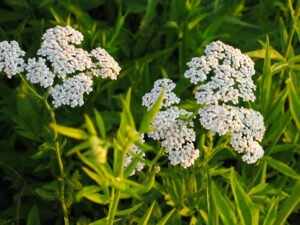Around the World
Filter
Clear All
Product Search
Categories
Nordic countries have a strong tradition of plant-based remedies and spiritual healing, with a focus on nature-based healing (e.g., Finnish sauna, Icelandic medicinal plants).

Northern Europe
Nordic countries have a strong tradition of plant-based remedies and spiritual healing, with a focus on nature-based healing (e.g., Finnish sauna, Icelandic medicinal plants).

Northern Europe
Nordic countries have a strong tradition of plant-based remedies and spiritual healing, with a focus on nature-based healing (e.g., Finnish sauna, Icelandic medicinal plants).
Yarrow, also known by its botanical name Achillea millefolium, is a hardy perennial herb widely recognized for its medicinal properties and its deep roots in ritualistic practices. Across Northern Europe, yarrow has been employed for a variety of physical ailments and held symbolic significance in numerous cultural traditions.
Medicinal Uses:
- Wound Healing. Yarrow has a long history of use in treating wounds, stemming from its ability to stop bleeding and promote tissue regeneration. Its tannin-rich leaves, when applied directly to cuts and abrasions, help to coagulate blood and reduce the risk of infection.
- Digestive Aid. The plant has been utilized to relieve digestive discomforts such as indigestion, bloating, and cramps. Yarrow stimulates bile production, improving overall digestion and soothing upset stomachs.
- Fever Reduction. Yarrow was frequently used in folk medicine to combat fevers. Consuming a warm infusion of yarrow flowers would induce sweating, helping to lower body temperature and expel toxins through the skin.
- Women’s Health. Traditionally, yarrow has been valued for its role in regulating menstrual cycles and alleviating symptoms like cramps. Its antispasmodic properties make it a go-to herb for easing menstrual discomfort.
Ritual and Symbolic Uses:
- Protection and Spiritual Defense. Yarrow was seen as a potent protective herb, used in both physical and spiritual realms. It was common to hang bundles of dried yarrow in homes or wear it as an amulet to ward off evil spirits and ensure safety.
- Divination and Fortune-Telling. In some Northern European cultures, yarrow stalks were integral to divination practices. The herb was used to cast lots or in rune-based rituals, believed to offer insight into future events or reveal hidden truths.
- Love and Marriage Rituals. Yarrow has also been linked to love and relationships. Brides would carry yarrow to ensure happiness and fidelity in marriage, while its flowers were incorporated into love charms or potions intended to strengthen romantic bonds.
- Purification and Healing. Yarrow’s purifying effects extended beyond physical healing. In ritual contexts, burning yarrow or using it in baths was thought to cleanse individuals or spaces from negative energy and sickness. Its smoke was considered a powerful purifier.
Yarrow’s active compounds, including sesquiterpene lactones, flavonoids, and alkaloids, have been substantiated in modern pharmacological studies for their antimicrobial, anti-inflammatory, and hemostatic effects. These findings lend credibility to its longstanding use in traditional medicine.

Northern Europe
Nordic countries have a strong tradition of plant-based remedies and spiritual healing, with a focus on nature-based healing (e.g., Finnish sauna, Icelandic medicinal plants).
Yarrow, also known by its botanical name Achillea millefolium, is a hardy perennial herb widely recognized for its medicinal properties and its deep roots in ritualistic practices. Across Northern Europe, yarrow has been employed for a variety of physical ailments and held symbolic significance in numerous cultural traditions.
Medicinal Uses:
Wound Healing. Yarrow has a long history of use in treating wounds, stemming from its ability to stop bleeding and promote tissue regeneration. Its tannin-rich leaves, when applied directly to cuts and abrasions, help to coagulate blood and reduce the risk of infection.
Digestive Aid. The plant has been utilized to relieve digestive discomforts such as indigestion, bloating, and cramps. Yarrow stimulates bile production, improving overall digestion and soothing upset stomachs.
Fever Reduction. Yarrow was frequently used in folk medicine to combat fevers. Consuming a warm infusion of yarrow flowers would induce sweating, helping to lower body temperature and expel toxins through the skin.
Women’s Health. Traditionally, yarrow has been valued for its role in regulating menstrual cycles and alleviating symptoms like cramps. Its antispasmodic properties make it a go-to herb for easing menstrual discomfort.
Ritual and Symbolic Uses:
Protection and Spiritual Defense. Yarrow was seen as a potent protective herb, used in both physical and spiritual realms. It was common to hang bundles of dried yarrow in homes or wear it as an amulet to ward off evil spirits and ensure safety.
Divination and Fortune-Telling. In some Northern European cultures, yarrow stalks were integral to divination practices. The herb was used to cast lots or in rune-based rituals, believed to offer insight into future events or reveal hidden truths.
Love and Marriage Rituals. Yarrow has also been linked to love and relationships. Brides would carry yarrow to ensure happiness and fidelity in marriage, while its flowers were incorporated into love charms or potions intended to strengthen romantic bonds.
Purification and Healing. Yarrow’s purifying effects extended beyond physical healing. In ritual contexts, burning yarrow or using it in baths was thought to cleanse individuals or spaces from negative energy and sickness. Its smoke was considered a powerful purifier.
Yarrow’s active compounds, including sesquiterpene lactones, flavonoids, and alkaloids, have been substantiated in modern pharmacological studies for their antimicrobial, anti-inflammatory, and hemostatic effects. These findings lend credibility to its longstanding use in traditional medicine.
Read More

